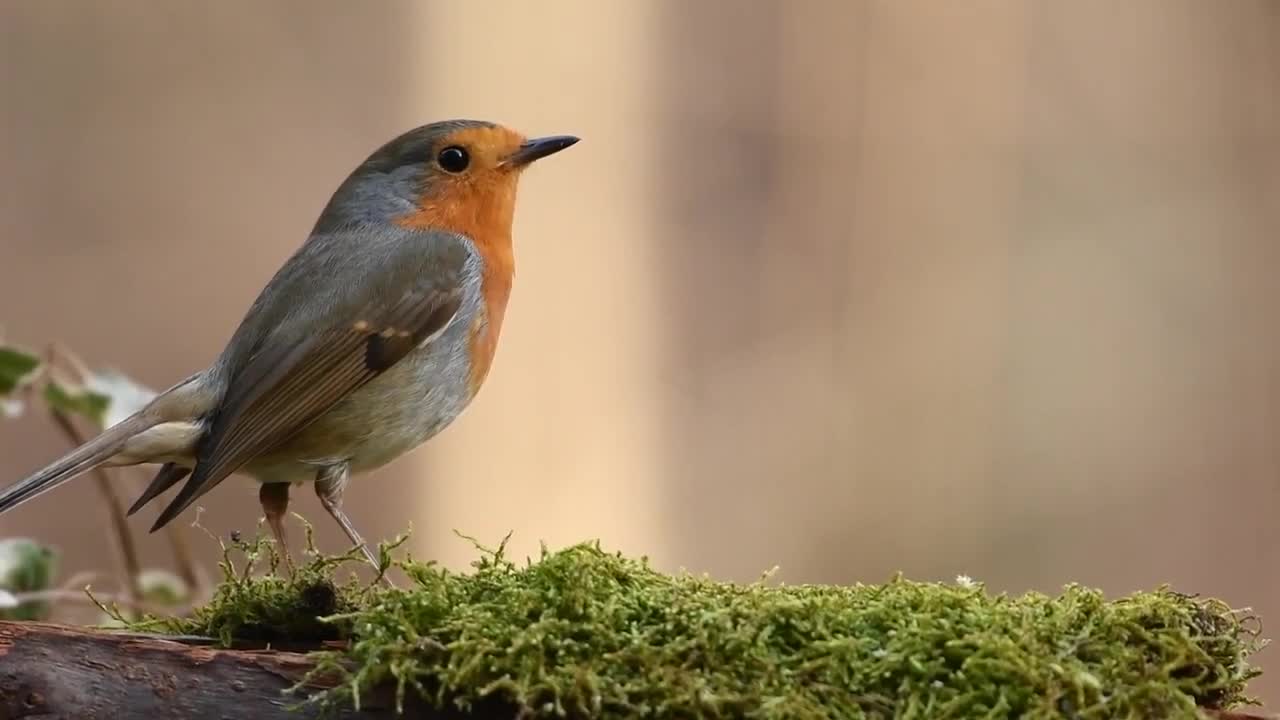Premium Only Content

robin bird #The American robin
robin, either of two species of thrushes (family Turdidae) distinguished by an orange or dull reddish breast. The American robin (Turdus migratorius), a large North American thrush, is one of the most familiar songbirds in the eastern united States. Early colonial settlers named it robin because its breast colour resembled that of a smaller thrush, the European robin (Erithacus rubecula). The American robin is about 25 cm (10 inches) long and has gray-brown upperparts, a rusty breast, and white-tipped outer tail feathers. The birds inhabit deciduous forests but are also a familiar sight in American towns and cities. Most are highly migratory, spending the winter in flocks in the southern United States, though a few winter as far north as southern Canada. The American robin feeds on earthworms, insects, and berries. The nest, built of twigs, roots, grass, and paper with a firmly molded inner layer of mud, is placed in trees or on building ledges. Four to six bluish green eggs are incubated by the female for 12–14 days. The female incubates the eggs and the male obtains food for the young, who fly in 14–16 days. There may be two or three broods per season. The name robin is also applied to other New World thrushes of the genus Turdus. The European robin or robin redbreast, is a chat-thrush (subfamily Saxicolinae) that breeds throughout Europe, western Asia, and parts of North Afrika. It is migratory in northern Europe but only partially so or sedentary farther south. It is a plump, small-billed bird, 14 cm (5.5 inches) long, with brownish olive upperparts, white belly, and rusty-orange face and breast. The European robin feeds mainly on insects. Its nest, built of leaves and moss and lined with feathers, is placed in a hole or cranny in walls, banks, and trees. The five to six whitish eggs are incubated for 13 to 14 days by the female, who is sometimes fed by the male. The young fly in 12–14 days, and then a second brood is reared. The European robin sings all year round, uttering high-pitched warbles. The name robin is also applied to a dozen other chat-thrushes in the genera Erithacus and Tarsiger, as well as to a few other related species, notably the Indian robin (Saxicoloides fulicata), which is about 15 cm (6 inches) long, with black plumage set off by a white shoulder patch and reddish patches on the underparts.
-
 LIVE
LIVE
Total Horse Channel
19 hours agoAMHA World Show 2025 9/21
625 watching -
 1:29:02
1:29:02
Game On!
1 day ago $7.12 earnedTHEY'RE BACK! NFL Wise Guys Return For Week 3 BEST BETS!
54.2K4 -
 6:16
6:16
China Uncensored
5 hours agoHow Trump Plans on Stopping Russia and China—Without Firing a Shot!
178K40 -
 33:13
33:13
Ohio State Football and Recruiting at Buckeye Huddle
17 hours agoOhio State Football: 10 Things We Learned Watching Washington's Win over Colorado State
94.6K -
 1:14:04
1:14:04
NAG Entertainment
17 hours agoKickback w/ Leon - Rocket League: Road to GC
59.7K -
 30:13
30:13
Degenerate Plays
5 hours ago $0.73 earnedBritish Insults Are Hilarious - Call of Duty: Modern Warfare 2 (2009) : Part 2
35.4K2 -
 6:42
6:42
NAG Daily
22 hours agoCharlie Kirk: His Words. His Vision. His Movement.
55.1K27 -
 21:42
21:42
Jasmin Laine
23 hours ago“Kimmel Isn’t a Victim, Charlie Kirk Was”—Gutfeld OBLITERATES Liberal Media Over FAKE Outrage
50.3K34 -
 33:59
33:59
ComedyDynamics
23 days agoBest of Jim Breuer: Let's Clear the Air
92.2K20 -
 2:11:03
2:11:03
Badlands Media
1 day agoDevolution Power Hour Ep. 391: First Principles, Psyops, and Hybrid Warfare
144K186